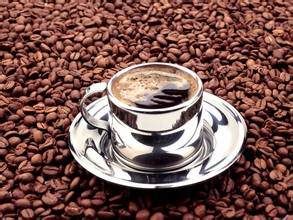The manor in the Mexican coffee producing area where the water washing method is mostly used in the treatment, introduces Aldura.
Mexican coffee-growing areas are mainly concentrated in the southeastern highlands, near Guatemala. Most of the mountains in the south are volcanic areas, and the volcanic ash soil is not only conducive to the drainage of coffee roots, but also provides sufficient nutrients for the growth of coffee trees. Most of the coffee varieties planted are Kaddura, Tibica, bourbon, etc., and the treatment methods are mostly water washing treatment, which are classified according to altitude.
Coffee beans are mainly exported to the United States, and about 70% of the coffee is exported directly to the United States, which is used as a large amount of industrial beans, making it a coffee plantation in the United States. However, Mexico's annual output is not proportional to its position in the coffee world. Although the output is large, there is a lack of some representative boutique coffee with outstanding quality. So when it comes to the level of understanding of Mexican coffee, most people, including myself, will feel relatively strange. When we taste and discuss beans from excellent producing areas of various countries, Mexican coffee exists awkwardly like an outsider.
But with a climate suitable for coffee growth, excellent coffee varieties, good soil and high-altitude planting areas, why is the quality of Mexican coffee not satisfactory?
A few days ago, when I went to Mexico, some colleagues jokingly called Mexico popcorn coffee. The quality of the raw beans exported by Mexico was not good, and the raw beans bought were sometimes mixed with a little corn and sand. If the corn is not picked clean and mixed with raw beans into the roaster, it will really become popcorn. But now the quality of raw beans exported from Mexico has been greatly improved, and the mixing of corn kernels has been a story for many years. Corn was cultivated by the ancient Indians of Mexico, so Mexico is known as the "hometown of corn", and corn is also the main crop in Mexico. Coffee in the drying process is not fine enough to mix with corn kernels. This explains why corn is mixed with corn. From this matter, it is not difficult to find that the root cause of the unsatisfactory overall quality of Mexican coffee lies in the follow-up production processing. From the harvest, processing, grading, packaging and transportation of coffee fruits, unreasonable operation will lead to the loss of good flavor.
For Mexican coffee, of course, we can not ignore the existence of high-quality coffee, many coffee farms are constantly improving their own planting, harvesting, and processing technology. I drank this Mexican, ground dry aroma with refreshing herbal and nutty aromas. It has a medium mellow thickness, low acidity, sweet and sour red berries, smooth, clean and mild taste and a long finish. Generally speaking, Mexican coffee is worth a try. I also believe that the quality of Mexican coffee will become better and better with the improvement of local production technology.

Important Notice :
前街咖啡 FrontStreet Coffee has moved to new addredd:
FrontStreet Coffee Address: 315,Donghua East Road,GuangZhou
Tel:020 38364473
- Prev

Excellent flavor of Ecuadorian coffee varieties Introduction Galapagos coffee San Cristobal produced
The best Ecuadorian coffee is grown on San Cristobal Island in the Galapagos Islands, where natural conditions are unique to the best coffee houses in the world. A cup of Galapagos coffee, like the beautiful scenery of the Galapagos Islands, is sure to impress you. Midstream fishermen fishing in the Pacific Ocean off western South America in the mid-15th century
- Next

Introduction to Dominica coffee with mellow taste and moderately bright sour taste
Dominica coffee beans (Caribbean) Dominica coffee is grown in highlands and lowlands, and its taste is slightly different. The upland is sour, but the taste is rich; the lowland is less sour and tastes smoother. Boutique coffee has become popular in recent years. The high-quality coffee beans produced by some Dominican estates have a rich aroma, mellow taste and moderately bright sour taste.
Related
- Does Rose Summer choose Blue, Green or Red? Detailed explanation of Rose Summer Coffee plots and Classification in Panamanian Jade Manor
- What is the difference between the origin, producing area, processing plant, cooperative and manor of coffee beans?
- How fine does the espresso powder fit? how to grind the espresso?
- Sca coffee roasting degree color card coffee roasting degree 8 roasting color values what do you mean?
- The practice of lattes: how to make lattes at home
- Introduction to Indonesian Fine Coffee beans-- Java Coffee producing area of Indonesian Arabica Coffee
- How much will the flavor of light and medium roasted rose summer be expressed? What baking level is rose summer suitable for?
- Introduction to the characteristics of washing, sun-drying or wet-planing coffee commonly used in Mantenin, Indonesia
- Price characteristics of Arabica Coffee Bean Starbucks introduction to Manning Coffee Bean Taste producing area Variety Manor
- What is the authentic Yega flavor? What are the flavor characteristics of the really excellent Yejasuffi coffee beans?

